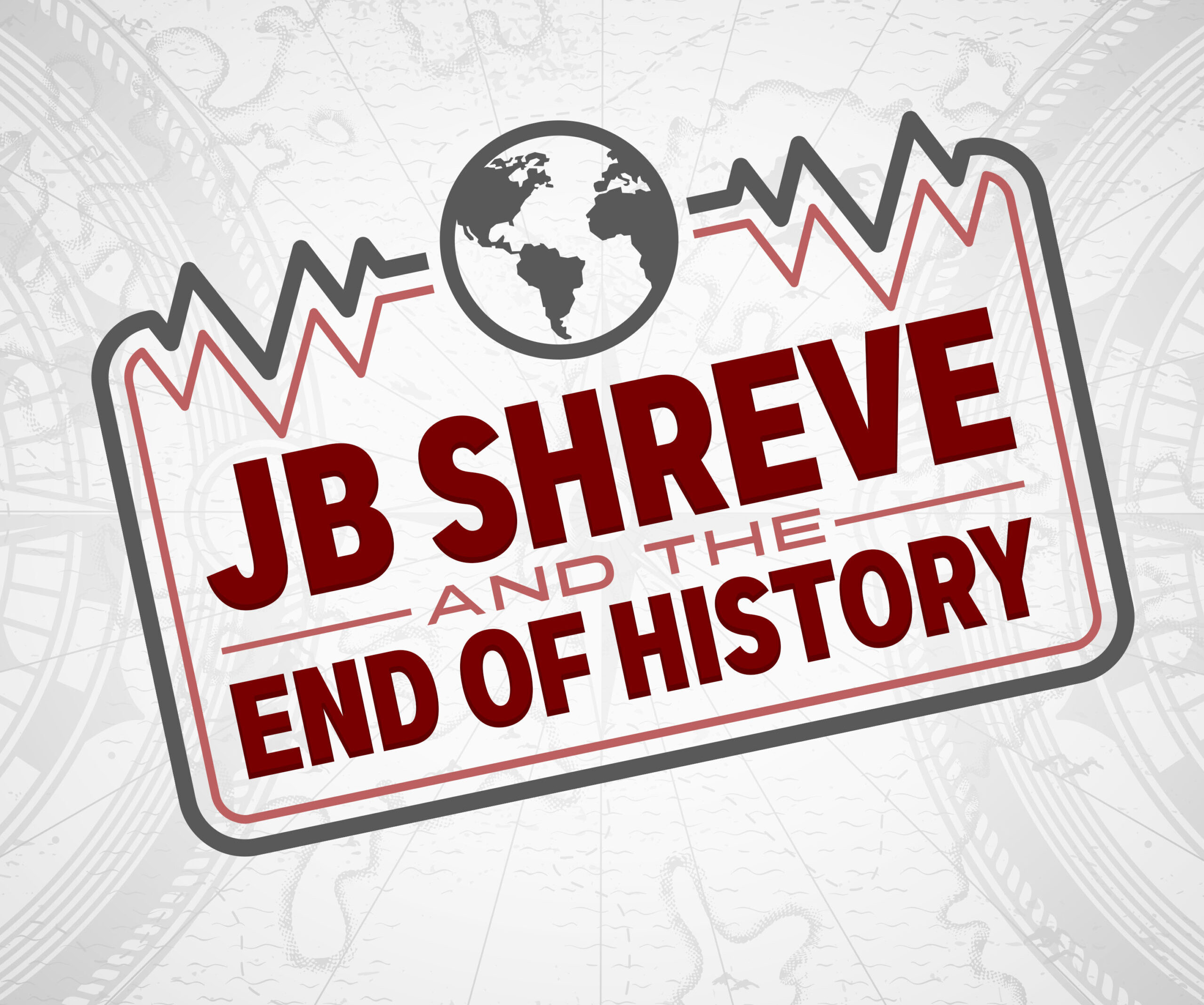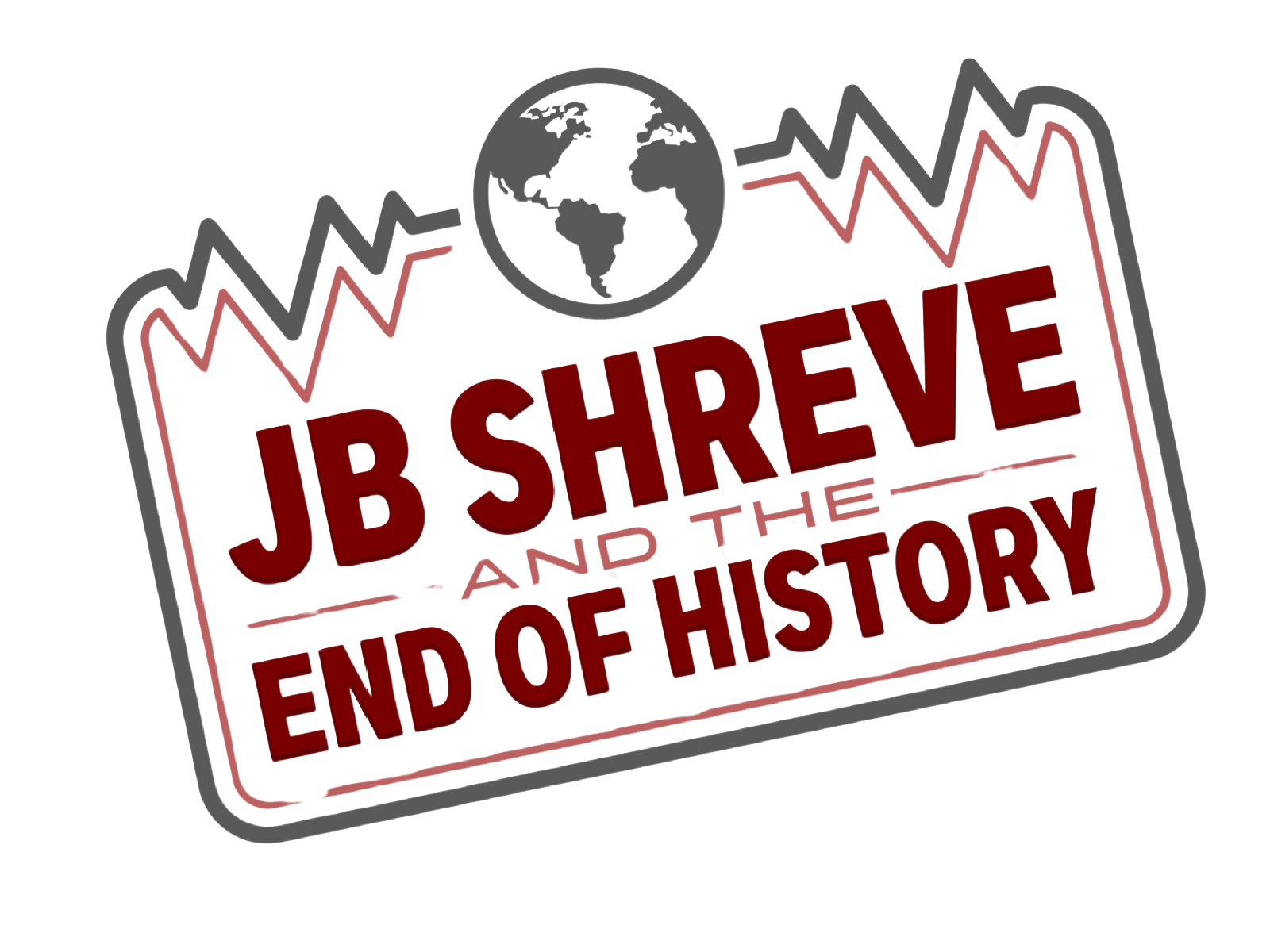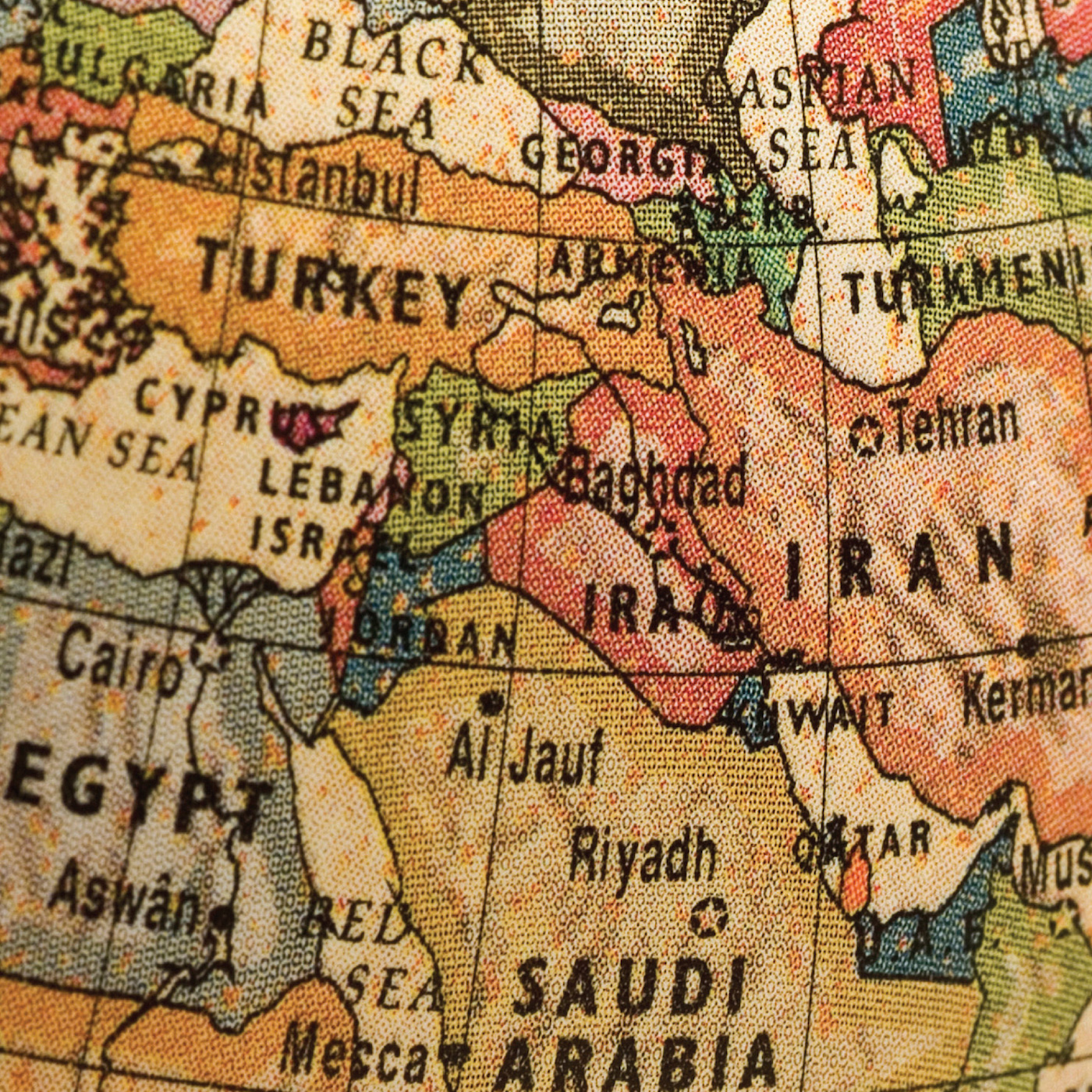
In 2012 JB Shreve and the End of History was launched with our first podcast series on the History of the Middle East. To this day the modern Middle East history podcast series remains among the most popular series downloaded every month from the web site.
Each podcast episode is packed with knowledge and stories about the history of the modern Middle East to keep it interesting. The episodes unfold like an ongoing story. The original series concluded in 2012 but in 2017 a new episode was added to the series that captured everything that has happened since that time.
You can click on each episode title below to download the specific episode and also refer to this listing for the specific order in which the episodes should be listened to if you want to go throughout the whole series on the history of the modern Middle East chronologically.
This entire series is available exclusively to our Patreon supporters.
-
History of the Middle East Podcast Series Part 1 – The Middle East Before World War I –
We look at different and false perspectives of the Middle East that a lot of us might have. Also, we talk about WWI’s role as a game changer in world history.
-
History of the Middle East Podcast Series Part 2 – World War I and the Middle East –
This second episode on the Middle East starts picking up the pace here and we cover some interesting issues at World War I where the modern Middle East was literally designed and put on a map by the “great powers.” This is kind of a two-parter on World War I as there is a lot to cover.

-
History of the Middle East Podcast Series Part 3 – Paris Peace Conference and the Seeds of Conflict –
We finish up World War I here and look at the Paris Peace Conference where the modern international order was laid out by the great powers. We will be talking about Woodrow Wilson’s significant role in the shaping of modern nationalism and self-determination in the Middle East as well as other parts of the world.
-
History of the Middle East Podcast Series Part 4 – The Mandate Period and the Interwar Years –
In this episode, we take a walk through the various newly formed nations of the Middle East and examine what was taking place during the inter-war years. We also examine the role of the colonial powers and seeds of future crisis that they sowed in the various nations at this time. We cover the entire interwar period here with a conclusion leading into the formation of the State of Israel.
-
History of the Middle East Podcast Series Part 5 – The State of Israel –
We enter into the post World War II era with the creation of the state of Israel in 1948. We will take a look at the idea of “holy land,” then move on from there to the politics that went into forming the Israeli state as well as the first Arab-Israeli War. We end with the beginning of the Palestinian refugee crisis.

-
History of the Middle East Podcast Series Part 6 – 1953 Iranian Coup d’état –
In this episode, we cover the 1952 Coup in Iran, orchestrated by the CIA in cooperation with the British. This coup set the tone of a lot of US activity in the region during the Cold War as it was seen, in the short term, as a successful operation. It also set the stage for a rising resentment in the nation against the US and the oppressive ruler they installed. This would become the rising tide of resistance that led to the 1979 Islamic Revolution in Iran.
-
History of the Middle East Podcast Series Part 7 – Suez Crisis of 1956 –
In this episode, we look at the rise of Gamal Abdul Nasser in Egypt, the end of British imperialism in the Middle East, and the Suez Crisis of 1956.
-
History of the Middle East Podcast Series Part 8 – The Age of “isms” –
This episode covers the “age of ‘isms'” in the Middle East, 1950’s and 60’s. We will look at the idea of the rule of law and the effects of coups and revolutions that were widespread in the region during this time period. Watch for Nasserism, Ba’athism, birth of the PLO and more in this episode. We will also do a quick run through the happenings in the region during these two decades that will end near the onset of the Six Days War.
-
History of the Middle East Podcast Series Part 9 – The Six Days War –
In this episode, we plow past some of the myths of the 1967 Six Days War and get into the actual history. This was a regional game changer that changed the face of the conflict between Israel and their Arab neighbors. It was the end of Nasser’s dominance and brought the Palestinian refugee crisis into a new status of despair and hopelessness.

-
History of the Middle East Podcast Series Part 10 – Effects of the Six Days War –
In this episode, we continue with our series on the modern history of the middle east and look at the after effects of the 1967 Six Days War in the region. Watch for the birth of Palestinian terrorism and we will look to learn where it came from. Also, we will look at the events of Black September in Jordan 1970.
-
History of the Middle East Podcast Series Part 11 – From Yom Kippur to Camp David –
We stay busy with our series on the history of the modern Middle East. We will look at the end of Nasser and the rise of Sadat, the October War (Yom Kippur), the rise of OPEC and the 1970’s oil embargo, the Camp David Accords and the assassination of the Sadat. Be on the lookout for a discussion on the difference between friends and interests among nations.

-
History of the Middle East Podcast Series Part 12 – The Rise of Radical Islam –
In this episode, we take a long look at the place of ideology in the way nations and governments work, not only in the Middle East but around the world. Then, upon that foundation, we move into the topic of the Islamic extremism ideology that came to the forefront in the late 1970’s. Watch for information on the modern history of this ideology, the siege of Mecca, Iranian Islamic Revolution, Afghan jihadists, and more….oh yeah…and here comes the beginning of al-Qaeda.
-
History of the Middle East Podcast Series Part 13 – The Fall of Lebanon –
In this episode, we look at the decline and fall of Lebanon beginning in the 1970’s and continuing into the 1980’s. Lebanon becomes a pawn in the affairs and interests of multiple outside parties and players including Syria, Israel, the PLO, and the US. This is also the sight of some significant massacres that helped in fueling a lot of the Shiite extremism that followed.
-
History of the Middle East Podcast Series Part 14 – The Boiling Point, Intifada –
In this episode, we look at a major turning point in the Israeli-Palestinian conflict – the Palestinian intifada of the 1980’s. It was the intifada that began changing world opinion and perspectives in regards to the Palestinians and exposed a lot of the injustices that were taking place in the conflict. It was also the intifada that helped in setting the stage for the peace process of the 1990’s. In this episode, watch for the decline of the PLO and Arafat and the rise of Hamas.
-
History of the Middle East Podcast Series Part 15 – The Iran-Iraq War –
In this episode, we review the often overlooked Iran-Iraq War of the 1980’s. This was the bloodiest conventional war of the 20th Century since World War II but often bypassed in histories of the Middle East as it was not related to many western struggles or the Cold War. For residents of the Middle East, it is this conflict, not Desert Storm, that is understood as the first Persian Gulf War. In this episode watch for the mechanisms of a man seeking to be the new figurehead of the Middle East, Saddam Hussein; the shift from revolution to war in Iran, and the consequences of the Iran-Iraq War that led to Operation Desert Storm.

-
History of the Middle Podcast Series East Part 16 – The Mother of All Wars –
In this episode, we look at Operation Desert Storm, the US-led international coalition into the Middle East to oust Saddam Hussein and Iraq from their invasion of Kuwait. Keep an eye out for what led to this invasion and the after-effects of the war including sanctions, no-fly zones, and the sense of unfinished business.
-
History of the Middle East Podcast Series Part 17 – The New World Order –
In this episode, we look at the state of the Middle East throughout the 1990’s in the period of time between the end of the Cold War and 9/11. This was a time of hope and promise for many while an age for rising resentment and frustration for others. We will look at the Peace Process, Project for New American Century and the beginnings of the 2nd Intifada.
-
History of the Middle Podcast Series East Part 18 – Game Change 9/11 –
In this episode, we look at the most recent and significant game change, not only to the Middle East but to the world. We will look at the change in US policy in the Middle East after 9/11, a change in norms and some of the direct effects to situations like the Israeli-Palestinian conflict as well as the US-Iranian relations.
-
History of the Middle East Podcast Series Part 19 – Decade of Destruction –
This episode covers the face of the new Middle East post 9-11 and the first decade of the 21st Century. We will look at topics such as the US invasion of Iraq, multiple wars in the Israeli-Palestinian conflict, civil war in Syria, violence and war in Lebanon, US-Iranian relations and the current state of the oil states.
-
History of the Middle East Podcast Series Part 20 – Arab Spring –
We are taking a look at the phenomenon known as the Arab Spring in this week’s episode as part of the continuing series on the history of the modern Middle East. We will look at where it came from, how it evolved and question a lot of the “Americanization” of Arab Spring. There is more than meets the eye here! (This episode was originally recorded in December 2012.)
-
History of the Middle East Podcast Series Part 21 – History of the Modern Middle East Series Finale –
In this final episode on our look at the history of the modern Middle East, we take a new view and go forward in considering where things are going in the Middle East. As we approach the 100-year mark in the formation of what is now known as the Middle East, where can we expect to see this region be in the next 100 years? Also, we examine how key a role US policy in the region has had in the last decade.
-
History of the Middle East Podcast Series Part 22 – The Collapse of the Middle East –
This episode, recorded in December 2017, captures all that has occurred in the Middle East since 2010. Many might not realize it but we are living in the midst of unprecedented change. As the modern Middle East turns 100 years old in 2019 there is plenty of evidence to suggest it will no longer be the Middle East we have known for this past 100 years. All of this unraveling has occurred since 2010.



1 Comment on “History of the Middle East”
Comments are closed.